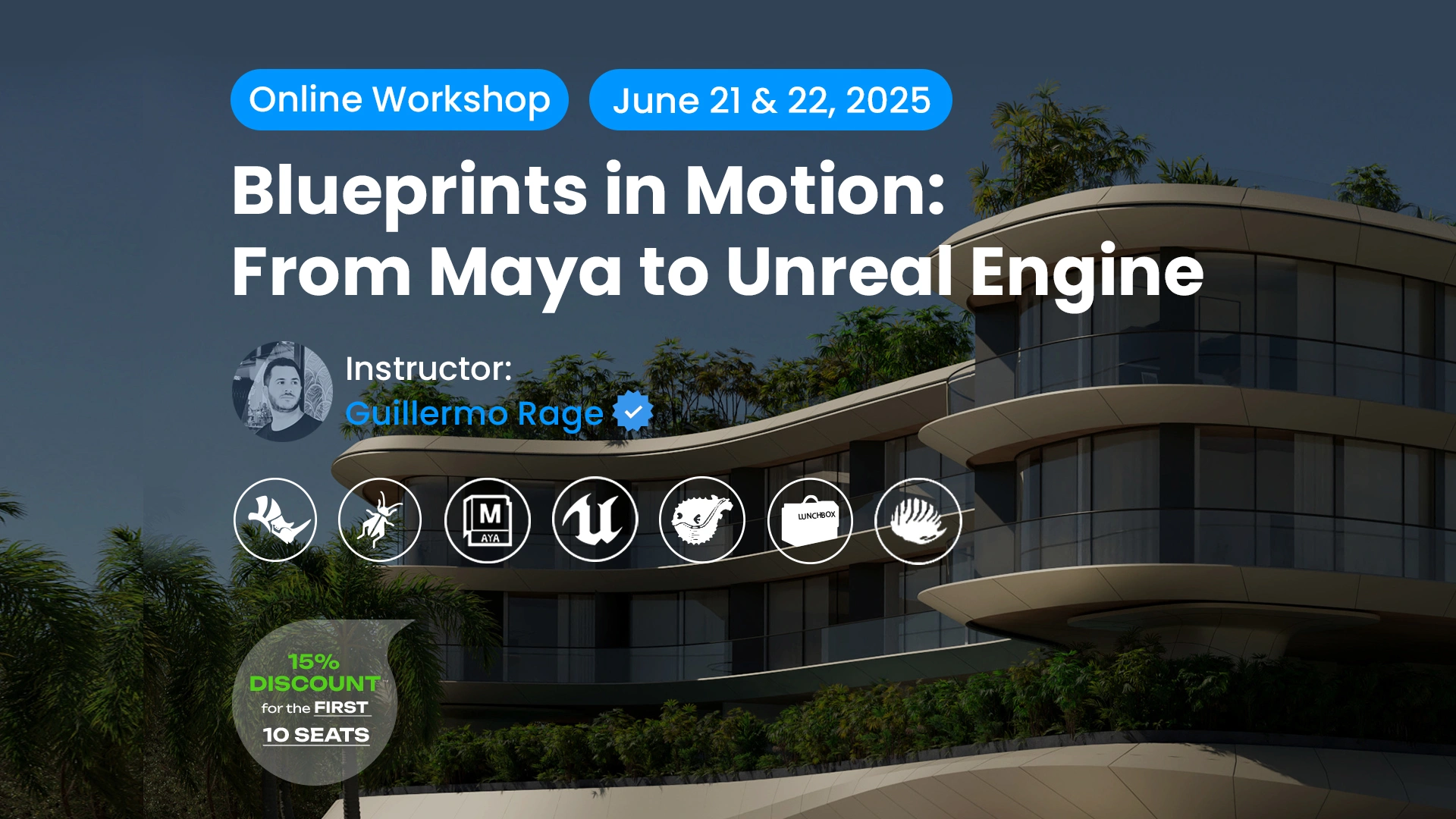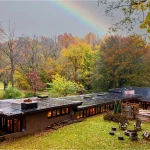In an attempt to chase divine light, Gothic architecture has been perceived rather darkly over the years. Maybe it’s a perfect paradox, feeling both spirituality and fear in these stone-carved marvels. This was a style so innovative that in all of its four centuries of prevalence, it had no name. Unfortunately, the Renaissance attributed the name Gothic to it, and I say unfortunately because it was not intended to mean anything good.
That’s the superiority complex of classicism; they deem everything different as barbaric. Thankfully, however, the term Gothic took on an identity of its own and to this day is revered as an exhilarating feat of engineering that piques interest, admiration, and reverence. This article will introduce Gothic architecture, its origins, perception, features, relation to the Gothic revival, and notable examples in hopes of shedding some light on its darker aspects.
Origins of Gothic Architecture
From the 10th to the early 12th centuries, Romanesque style was dominating the architectural sphere in Europe. Shortly after, Gothic architecture emerged and offered a stark alternative to the hefty, thick-walled, dark-lit Romanesque structures. In pursuit of a more celestial expression of the Christian church, the gothic approach crafted soaring structures filled with light and grace.
Abbot Suger was the earliest known pioneer of the Gothic style, as he oversaw the rebuilding of Saint-Denis Basilica in the Île-de-France region of France, which was completed around 1144. Of his most notable visionary structural endeavors are ribbed vaults, pointed arches, and flying buttresses. All throughout the centuries, from 12th to 16th, Gothic architecture had no label, but rather a peculiar edge.
At the dawn of the Renaissance, critics felt the need to name this style, which they perceived as horrid and barbaric, so befittingly, they attributed it to the Goths, a Germanic tribe linked to the fall of the Roman empire. It shows how human’s inability to accept change is so innate that the Renaissance thinkers deemed such a remarkable approach so regressive. While the balanced and harmonious ideals of ancient Greece and Rome are phenomenal, it was a bit too cruel to dismiss Gothic architecture like that.
The Gothic Perception: From Architecture to Horror

Away from the barbaric attributes, the term gothic took a life of its own. Literature played a major role in shifting this perception with works like Horace Walpole’s The Castle of Otranto and Mary Shelley’s Frankenstein. These stories crafted eerie atmospheres in decaying castles and medieval ruins, drawing from Gothic architectural aesthetics. Gaston Leroux’s The Phantom of the Opera further solidified this link, using the Gothic architecture of the Paris Opera House as a backdrop for haunting tales of obsession and unrequited love.
Today, “Gothic” evokes a mood of dark, mysterious spaces, and continues to influence modern horror and fantasy genres. It’s quite ironic, though, that a structure built with the purpose of allowing more light and pursuing the divine has been transformed into a dark horror mystery. But this association likely stems from the medieval period itself, where the towering, shadowy cathedrals—often filled with grotesque gargoyles and other strange figures—evoked a sense of awe and fear.
Gothic Style: Concept and Features
The core concept of Gothic architecture was to create buildings that symbolized the heavens on earth with structures that soared skyward and bathed in divine light. This was achieved through innovative structural solutions that allowed for large stained-glass windows and lofty interiors. The Gothic architectural style has a rich array of distinct features, each with its own story.
Main Features of Gothic Architecture:
- Pointed Arches: Enhance verticality and grandeur, drawing the eye upward and inspired by earlier Islamic architecture.
- Ribbed Vaults: Provided a skeletal framework that supported the roof, enabling more complex and higher ceilings.
- Flying Buttresses: External supports that transfer the weight of the roof away from the walls, allowing for larger windows.
- Stained Glass Windows: Allow light into cathedrals while depicting biblical scenes and religious symbols, integrating art and architecture.
- Tracery: Stone frameworks in windows, enhancing the decorative aspect of the glass.
- Spire: Tall, slender towers that added to the vertical emphasis of Gothic churches.
- Ornate Facades: Highly detailed exteriors featuring sculptures, gargoyles, and elaborate carvings.
- Boss Stones: Decorative keystones at vault intersections that support the structure and often feature religious motifs.
- Gargoyles and Grotesques: Carved elements that either divert rainwater or add decorative, sometimes eerie, touches to buildings.
- Pinnacles: Ornamental spires that cap buttresses or turrets, adding vertical emphasis and stabilizing walls.
- Tympanum: Decorative area above doors with intricate carvings, often religious, serving to inspire and educate worshippers.
Gothic Architecture and Gothic Revival
With the rise of the Renaissance era in the 16th century, the Gothic architecture style faded. Two centuries later, as a reaction to the neoclassical architectural trends that were prevalent during the Enlightenment, Gothic Revival emerged between the 18th and 19th century. The Enlightenment came with a focus on reason, individualism, and skepticism of traditional authority, particularly the Church and monarchy. Along with it came the Industrial Revolution with its dehumanizing aspects of mass production, mechanization of time, urbanization, and the loss of traditional craftsmanship.
Gothic revival sought to bring back the medieval Gothic architectural forms, driven by a desire to reconnect with history and tradition. Figures like Augustus Pugin and buildings such as the Palace of Westminster in London were central to this movement. Gothic Revival sought to revive the spiritual and moral values of Gothic architecture, contrasting with the rationalism, industrialism, and soullessness of the era’s modern society.
The Gothic Revival was fueled by a longing to recreate the past, using modern techniques and materials to capture a sense of artistic and spiritual purity. Unlike the original Gothic architecture, the Revival was more about aesthetics and symbolism, offering a romanticized interpretation of the Middle Ages. While they do look similar, Gothic Revival buildings often had different purposes, merging medieval styles with new cultural and artistic goals.
Notable Examples of Gothic Architecture
Notre-Dame de Paris (1163–1345)
Notre-Dame de Paris stands as a legendary icon of French Gothic architecture, a vision first brought to life by Bishop Maurice de Sully. This majestic cathedral, completed over nearly 182 years, is famous for its groundbreaking use of flying buttresses, which made possible the soaring walls and its iconic glass-tainted rose windows.
Adorned with intricate sculptures and statues, such as the Gallery of Kings, Notre Dame’s facade tells stories of old. Its spires, ribbed vaults, and vast nave draw the eye heavenward to take its occupant on a spiritual journey. Unfortunately it caught fire in 2019 and underwent numerous reconstruction to grace the sky again, so far the official reopen date is set to December 8, 2024.
Chartres Cathedral (1194–1220)
Chartres Cathedral, a UNESCO World Heritage site and first cathedral to receive this title, is a magnificent example of High Gothic architecture. Built in just over 25 years under the supervision of Bishop Renaud de Bar. This masterpiece showcases extraordinary stained glass windows that span more than 2,500 square meters, illustrating biblical tales in vivid color. Its contrasting spires—one Romanesque, the other Gothic—highlight the evolution of architectural styles through time.
The cathedral’s soaring nave and intricate rose window fill the interior with a divine light, creating an ethereal atmosphere that captures the Gothic focus on verticality and luminosity.
Reims Cathedral (1211–1275)
Reims Cathedral, where French kings were traditionally crowned, is a triumph of Gothic architecture. Designed by Jean d’Orbais, this grand structure took 64 years to complete. It is well known for its symmetrical facade adorned with over 2,300 statues, including the iconic Smiling Angel. The cathedral’s towering spires and intricate tracery showcase the Gothic dedication to verticality and elaborate detail.
Inside, the ribbed vaults and expansive nave elevate the space, drawing the eye upwards in a gesture of spiritual aspiration. Reims Cathedral’s blend of royal history and sculptural innovation makes it a cornerstone of European Gothic architecture.
Cologne Cathedral (1248–1880)
Cologne Cathedral is a monumental testament to Gothic architecture’s enduring influence, with its construction spanning over six centuries. Originally designed by Master Gerhard, this UNESCO World Heritage site is famed for its towering twin spires that dominate the city’s skyline.
The cathedral’s facade is richly ornamented with intricate sculptures. The interior features majestic ribbed vaults, a vast nave, and stunning stained glass windows that tell stories through light and color. The long construction period allowed for a blend of styles, making Cologne Cathedral a unique embodiment of Gothic architectural evolution.
Milan Cathedral (1386–1965)
Milan Cathedral, or the Duomo di Milano, is Italy’s largest Gothic cathedral and a breathtaking example of the Flamboyant Gothic style. Construction began under Archbishop Antonio da Saluzzo and continued for nearly six centuries, involving numerous architects like Simone da Orsenigo and Giovanni Solari. The cathedral’s ornate facade is a spectacle, covered with over 3,000 statues and crowned by 135 spires.
Inside, the soaring nave and ribbed vaults create a sense of upward movement, drawing visitors’ gazes toward the heavens. The expansive stained glass windows and intricately carved marble altars add to its grandeur, solidifying Milan Cathedral as a masterpiece of Gothic art.



























Leave a comment